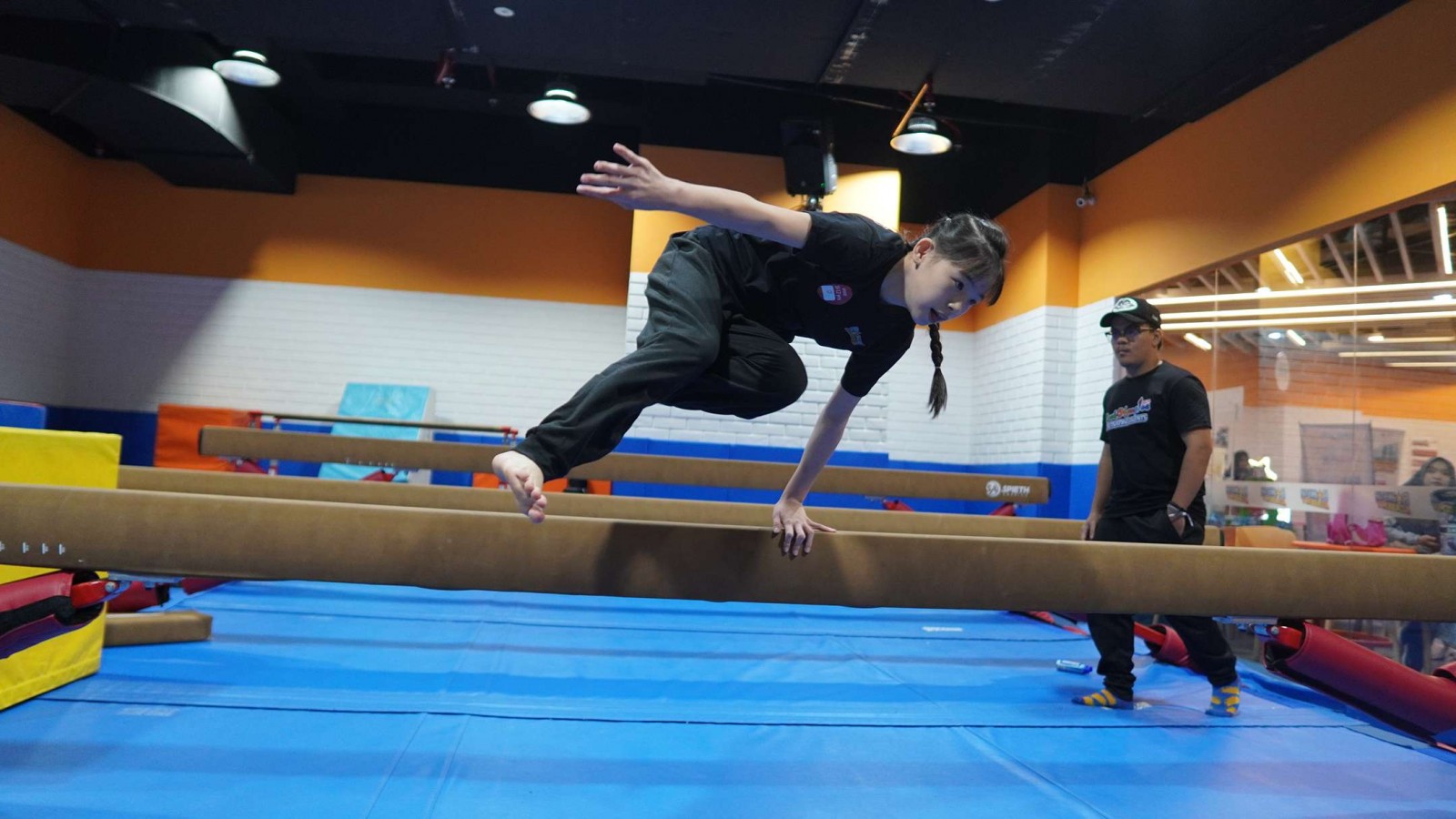Everything You Need To Know About Tumbling In Gymnastics

Tumbling in gymnastics is a breathtaking display of athleticism, agility, and grace. It's a captivating aspect of gymnastics that has enthralled audiences for centuries. From its rich history to the intricate skills involved, tumbling remains a cornerstone of gymnastics worldwide.
This article aims to provide an informative and comprehensive guide to everything you need to know about tumbling in gymnastics, including its history and its fundamental skills.
History of Tumbling
Tumbling has deep roots in human history, tracing back to ancient civilizations such as the Greeks, Romans, and Egyptians. In ancient Greece, tumbling was practiced as part of physical training and was even incorporated into theatrical performances and religious ceremonies. The Romans further refined tumbling as a form of entertainment in arenas, showcasing feats of agility and strength.
During the Middle Ages, tumbling evolved into a popular form of entertainment across Europe, with performers known as tumblers entertaining crowds with acrobatic displays and stunts. Tumbling continued to evolve through the Renaissance and into the modern era, eventually becoming a structured discipline within gymnastics.
Basic Tumbling Skills You Should Know
Tumbling in gymnastics encompasses a wide range of dynamic skills that require strength, flexibility, and precision. From forward rolls to complex aerial maneuvers, tumbling skills vary in difficulty and complexity. Here are some fundamental tumbling skills commonly practiced by gymnasts:
1. Forward Roll
The forward roll is one of the most basic tumbling skills, where the gymnast tucks their head and shoulders and rolls forward in a smooth motion, ending in a standing position.
2. Backward Roll
Similar to the forward roll, the backward roll involves rolling backward while tucking the head and shoulders, ultimately returning to a standing position.
3. Cartwheel
A staple of gymnastics, the cartwheel involves the gymnast kicking their legs over their body while supporting their weight on their hands, executing a graceful sideways motion.
4. Handstand
The handstand requires the gymnast to support their entire body weight on their hands while inverted, maintaining a straight line from hands to feet.
5. Back Handspring
A dynamic tumbling skill, the back handspring involves a sequence of backward flips executed in quick succession, propelling the gymnast backward.
6. Aerial
An advanced tumbling skill, the aerial is a no-handed cartwheel where the gymnast rotates their body in the air without any support from their hands.
7. Roundoff
A powerful tumbling skill, the roundoff combines elements of the cartwheel and back handspring, allowing the gymnast to generate momentum for subsequent tumbling passes.
8. Tuck, Pike, and Layout
Variations of somersaults where the gymnast rotates in the air while tucking, piking (bending at the waist), or maintaining a straight body position.
Guide on How To Tumble
Mastering tumbling skills requires dedication, practice, and proper technique. Here are some tips for aspiring gymnasts looking to improve their tumbling abilities:
A. Warm-Up
Always begin with a thorough warm-up to prepare your body for the physical demands of tumbling. Stretching and conditioning exercises help improve flexibility and strength.
B. Start with Basics
Focus on mastering fundamental tumbling skills such as forward rolls, backward rolls, cartwheels, and handstands before progressing to more advanced maneuvers.
C. Spotting and Safety
When learning new skills, work with a qualified coach or spotter who can provide guidance and ensure safety. Spotting techniques help prevent injury and build confidence.
D. Consistent Practice
Tumbling skills require repetition and consistency to master. Dedicate regular practice sessions to honing your technique and improving your confidence.
E. Progression
Gradually progress to more challenging skills as you build strength, flexibility, and confidence. Break down complex maneuvers into smaller, manageable steps to facilitate learning.
F. Feedback and Corrections
Next, seek feedback from coaches and peers to identify areas for improvement and make necessary corrections. Pay attention to details such as body alignment, timing, and execution.
G. Visualization and Mental Preparation
The other thing you have to do in learning tumbling is to visualize yourself performing tumbling skills successfully before attempting them. Mental preparation can enhance focus, confidence, and performance.
H. Stay Safe
Always prioritize safety when practicing tumbling. Use proper equipment, such as mats and padding, and avoid attempting skills beyond your current ability level without proper supervision.
Ready to Try Tumbling in Gymnastics?
Tumbling in gymnastics is a dynamic and exhilarating pursuit that requires dedication, perseverance, and a commitment to excellence. Whether you're a beginner or an experienced gymnast, mastering tumbling skills offers a rewarding journey of physical and mental growth.
In fostering a child's interest and aptitude for gymnastics, parents play a crucial role in providing opportunities for growth and development. Enrolling children into a gymnastics program, such as Rockstar Academy, can significantly enhance their skills and passion for the sport.
As the premier Sports & Performing Arts Academy, Rockstar Academy offers a diverse range of physical activity programs, including gymnastics, designed to nurture talent and instill discipline.
With a structured curriculum that includes Gymnastics Testing and Gymnastics Elite Championships, children are empowered to progress to higher levels and prepare for National & International competitions.
Gymnastics Testing serves as a pathway for advancement, while Gymnastics Elite Championships promote excellence, sportsmanship, and resilience. Moreover, Rockstar Academy extends a complimentary trial class to anyone interested in exploring gymnastics.
To embark on this exciting journey of athletic achievement and personal growth, we encourage you to reach out to Rockstar Academy and discover the transformative power of gymnastics!
FAQs
Is tumbling only for gymnasts?
While tumbling is a fundamental aspect of gymnastics, it is also practiced in other disciplines such as cheerleading, martial arts, and acrobatics.
At what age can someone start learning tumbling?
Tumbling can be learned at any age, but most gymnastics programs offer classes for children as young as preschool age. Adult tumbling classes are also available for individuals of all skill levels.
Are there specific requirements for tumbling?
Tumbling requires a certain level of strength, flexibility, and coordination. However, individuals of varying abilities can participate in tumbling activities and progress at their own pace.
How can I overcome fear when attempting new tumbling skills?
Fear is a common obstacle in tumbling, especially when learning new and challenging skills. Gradual progression, proper spotting, and positive reinforcement can help overcome fear and build confidence.
Can tumbling be done at home?
While some basic tumbling exercises can be practiced at home, it's essential to have proper equipment and supervision, especially when attempting more advanced skills. Joining a gymnastics program or working with a qualified coach is recommended for safe and effective tumbling training.



